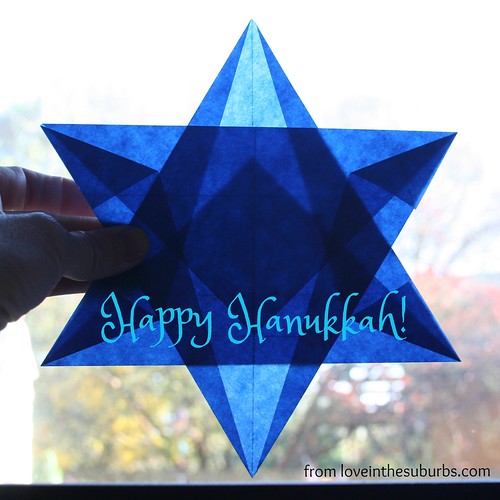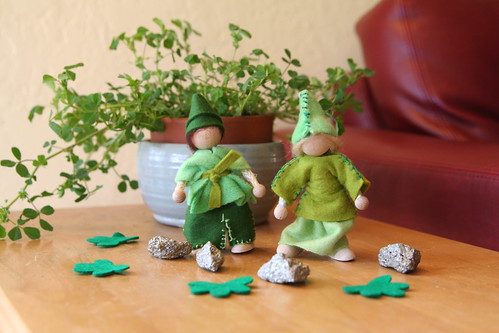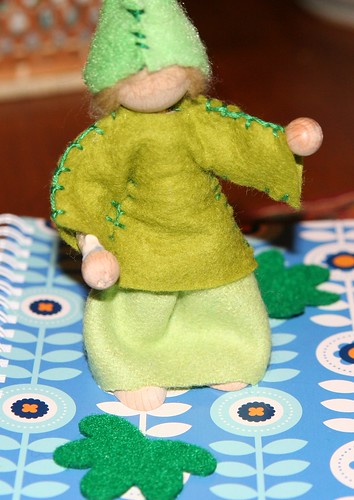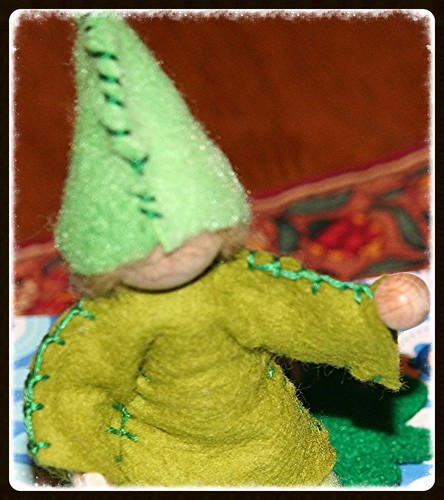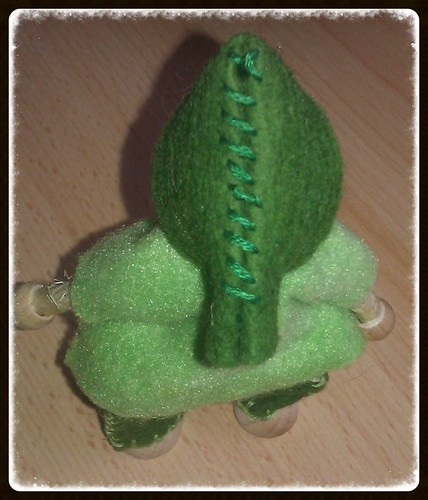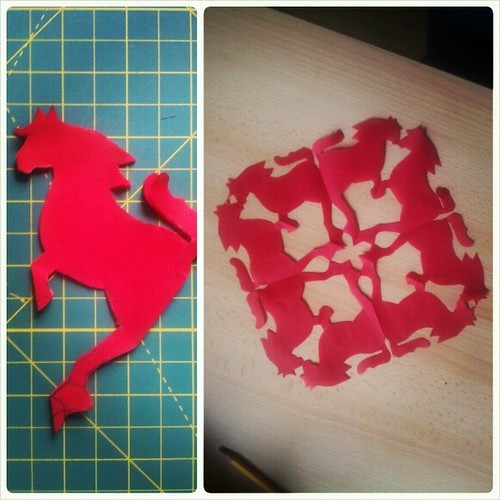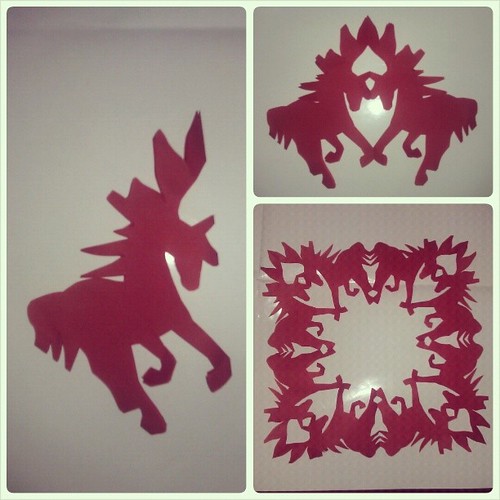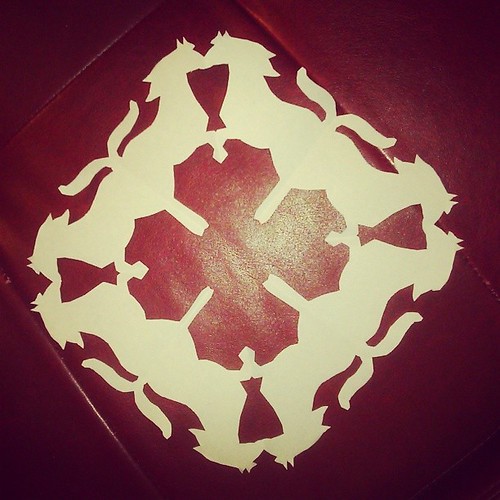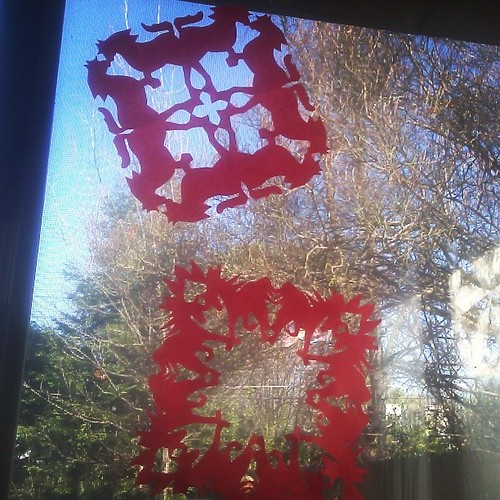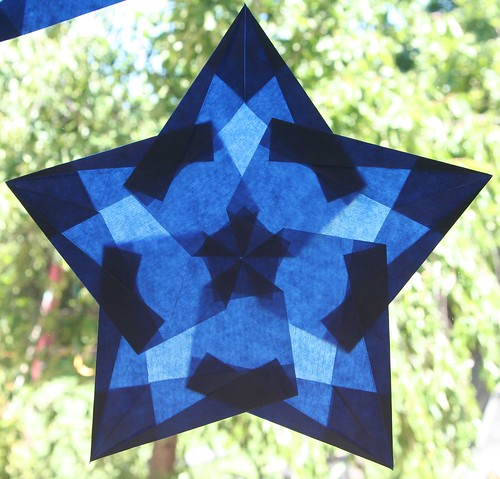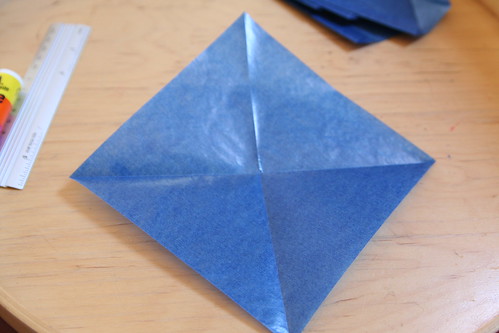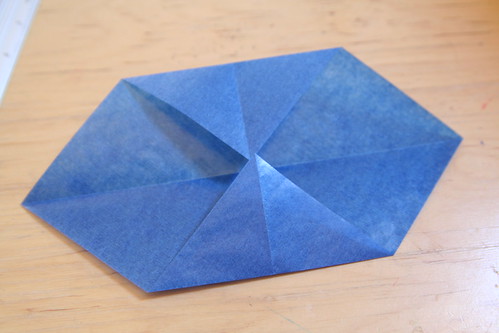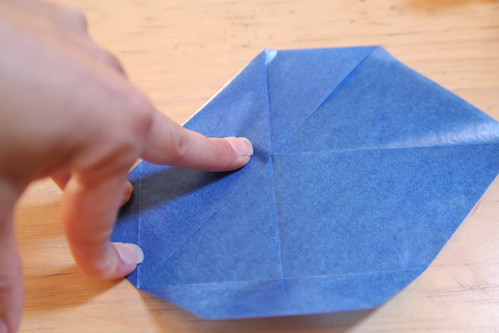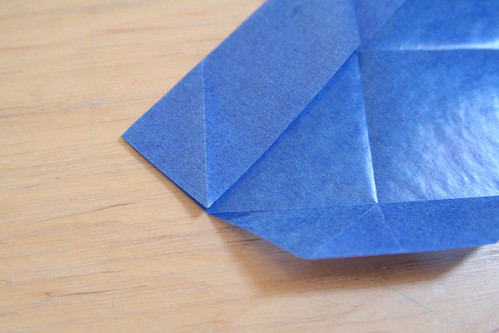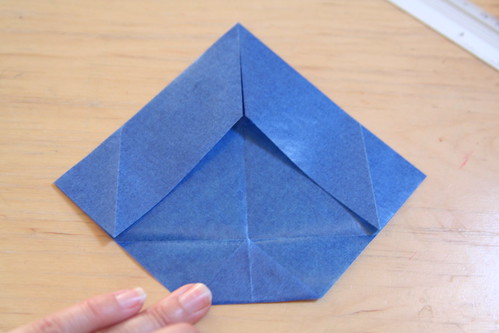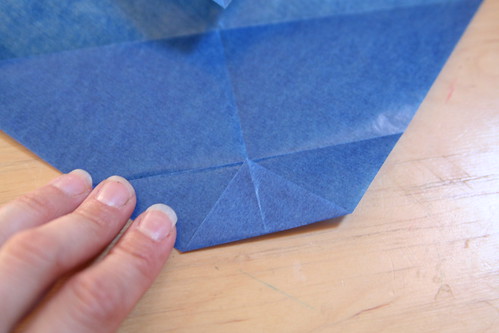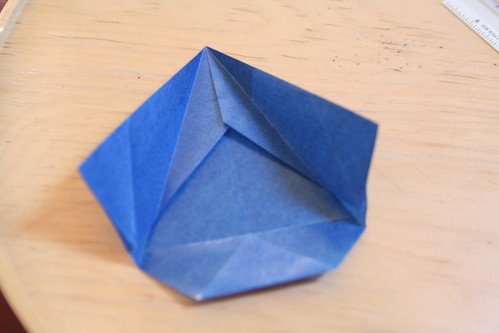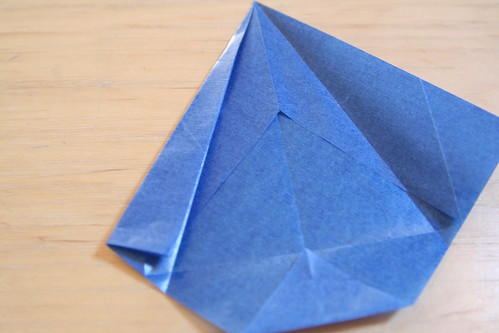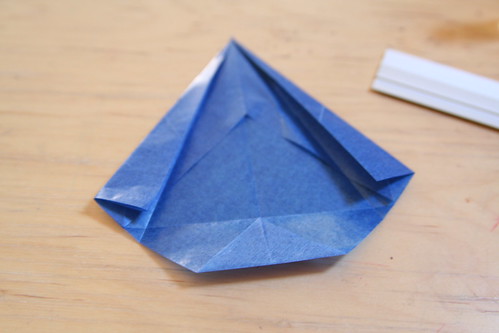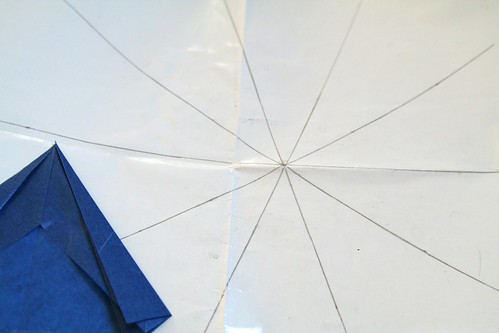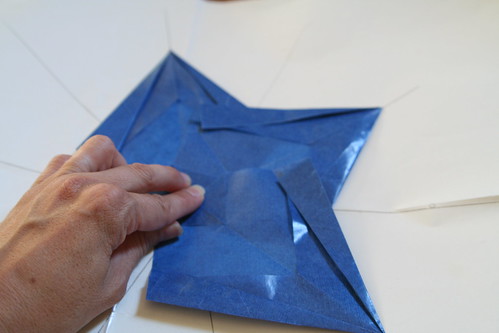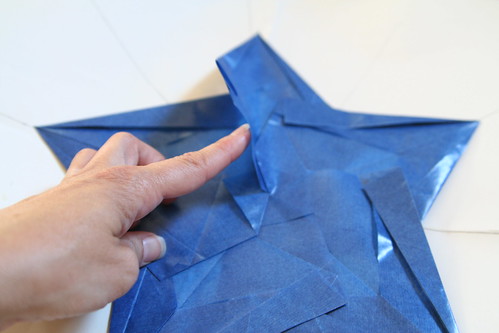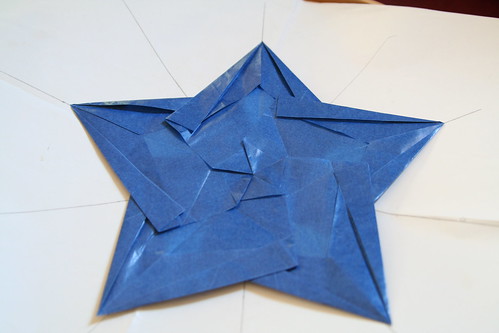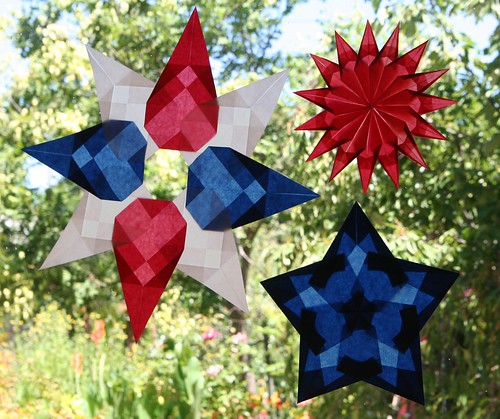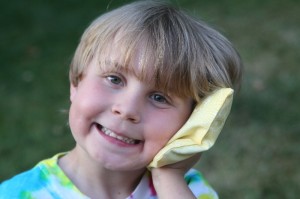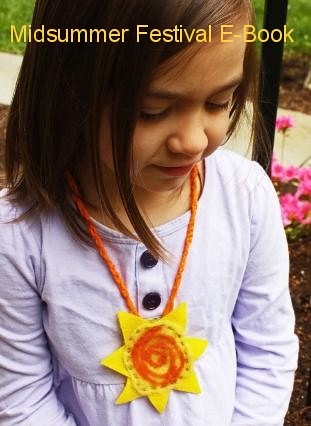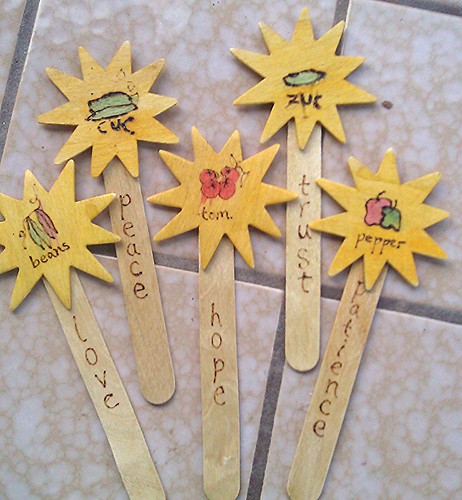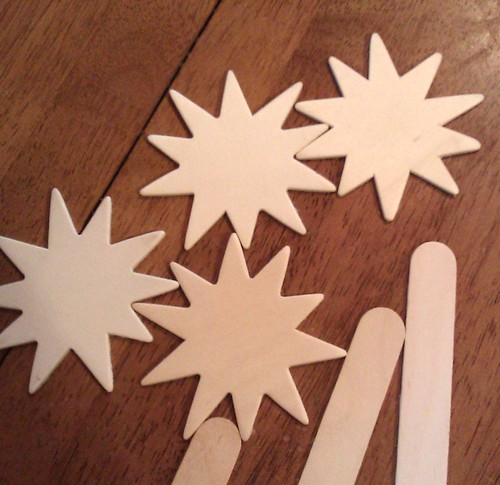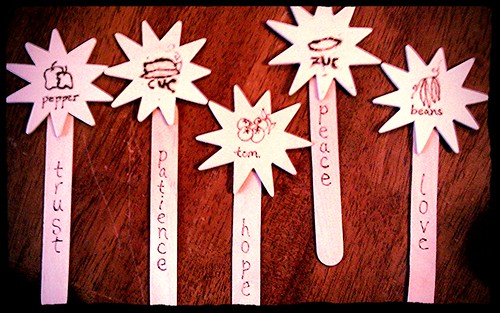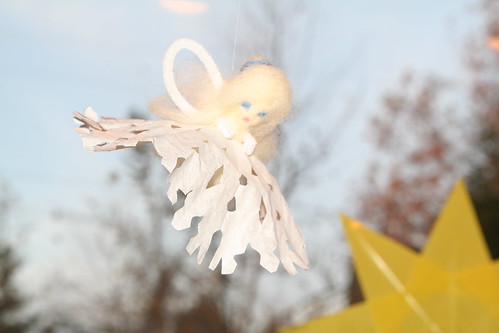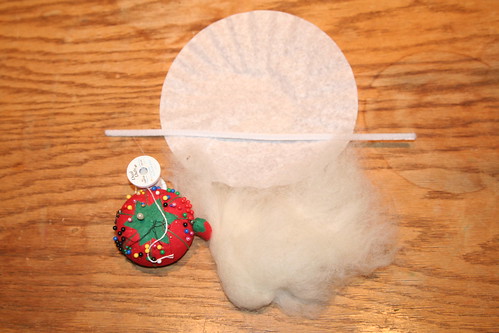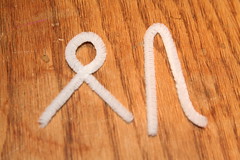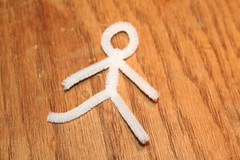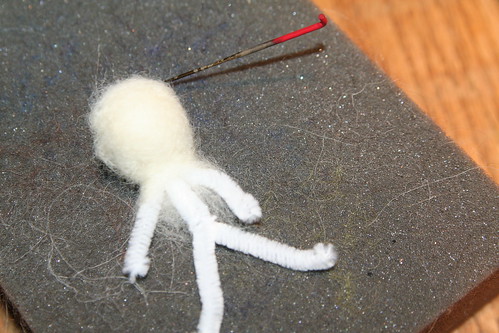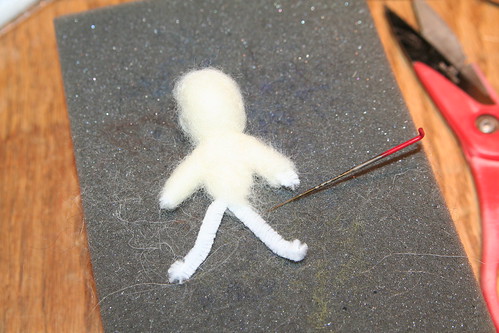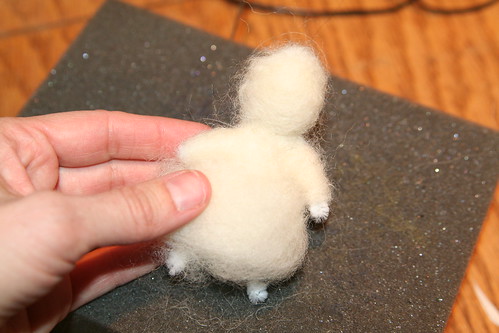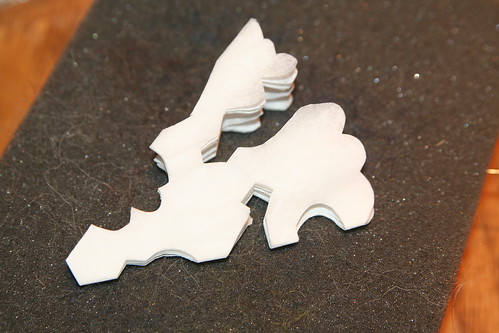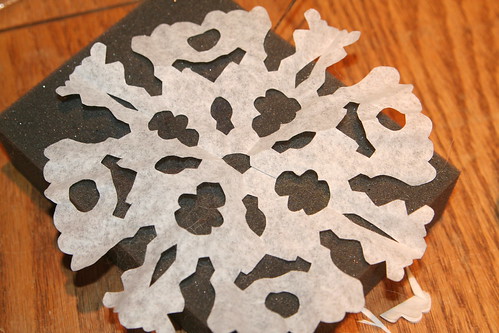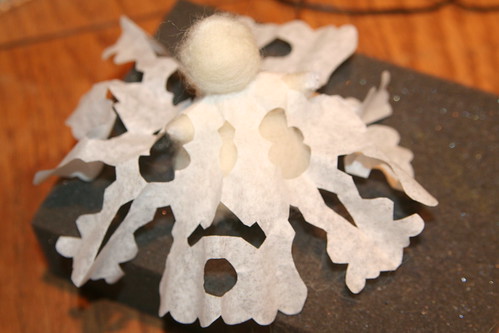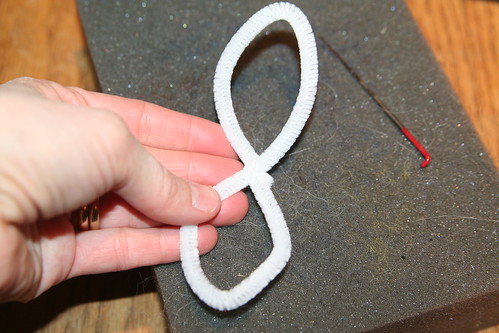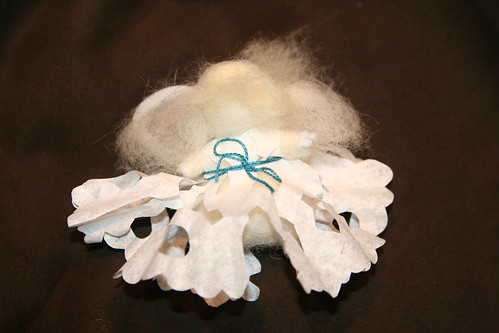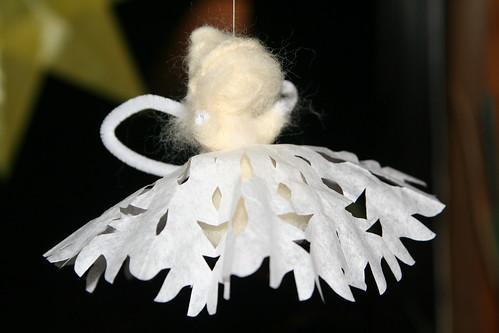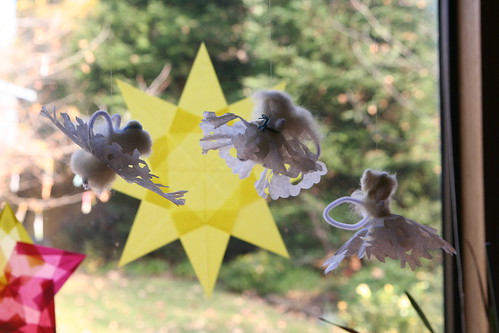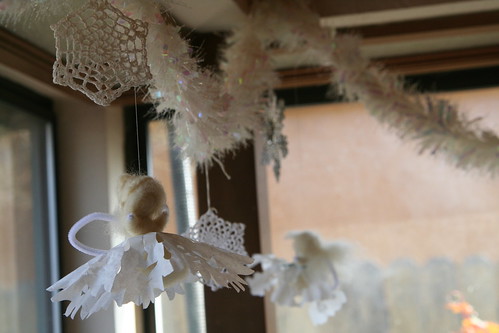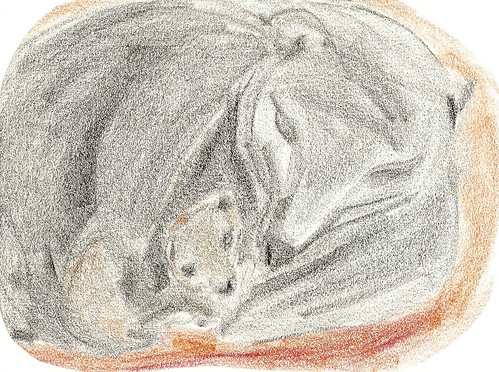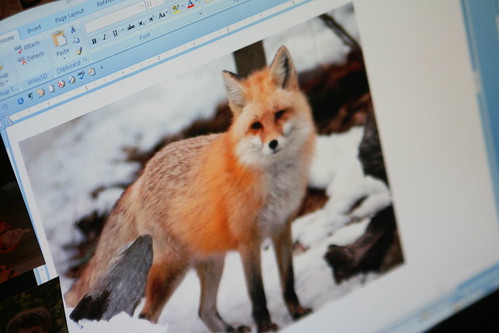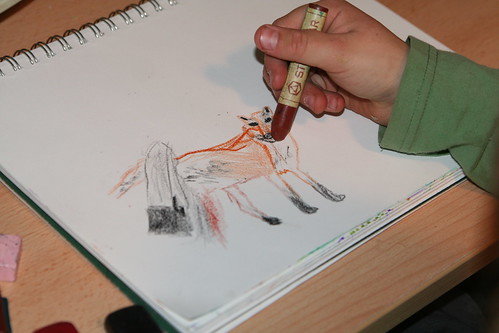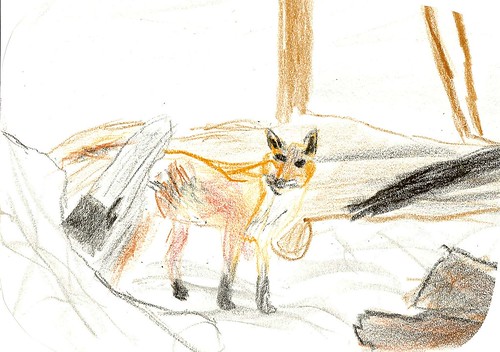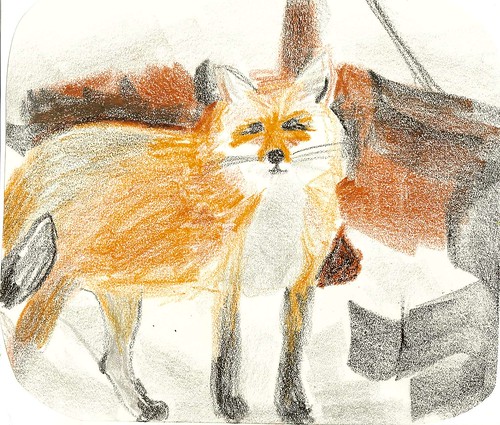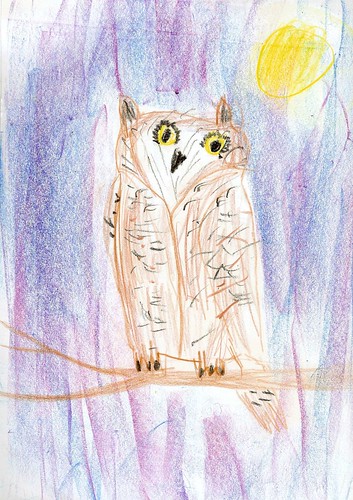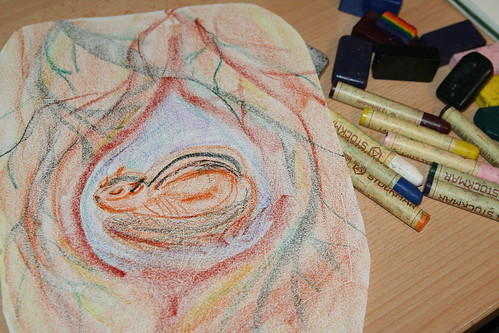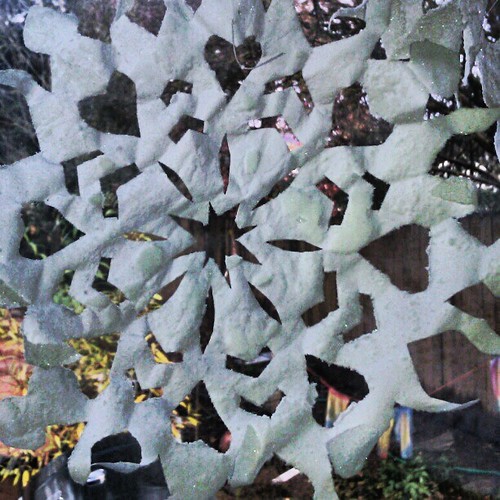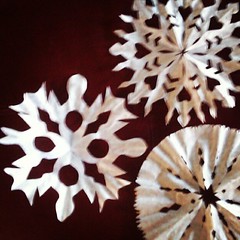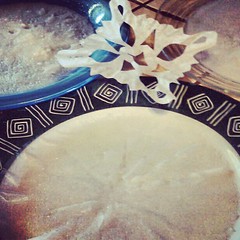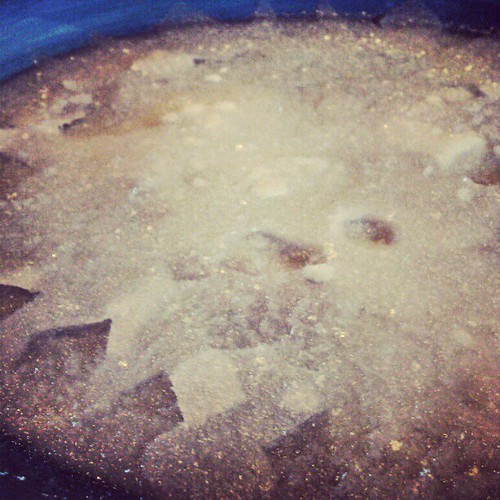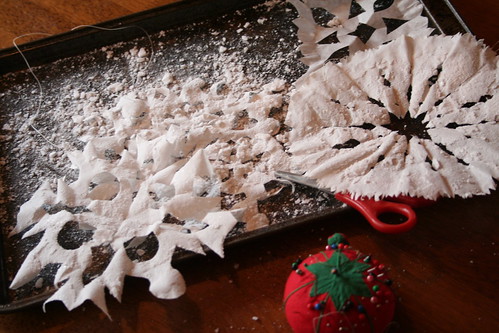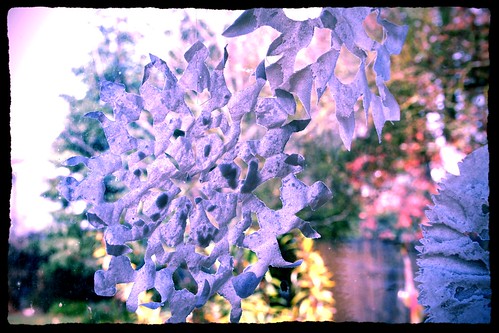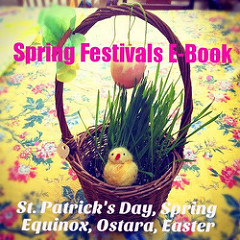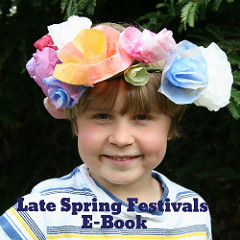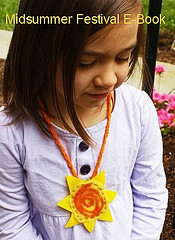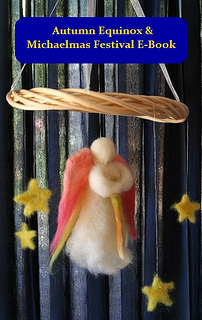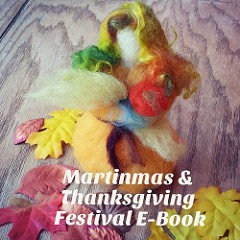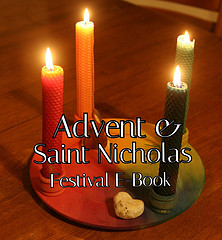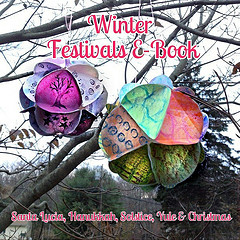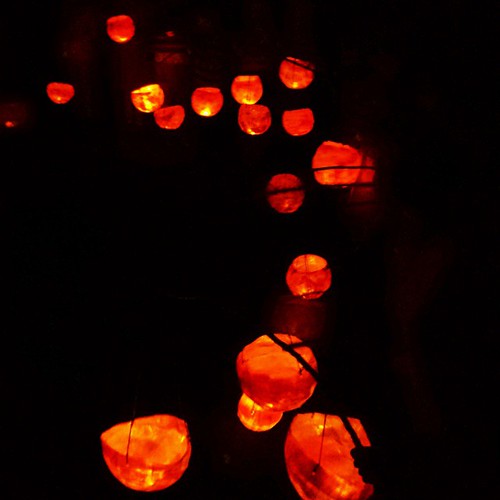
We had a wonderful time last night at Asher’s second-grade lantern walk. Our sweet teacher really wanted a mood of quiet reverence, and ultimately I think we got there, but the first few minutes of waiting for the event to begin were a tad wild. How often do large groups of 7- and 8-year-olds have the opportunity to play in the dark at their schoolyard?
When the teacher gathered the children together, they sang some wonderful songs for us. We entered the classroom, which was glowing from lantern lights atop the desks arranged all around the room’s periphery. The children sat on the floor and we parents gathered around the edges of the room. Teacher then told a beautiful story of Saint Martin walking through the cold, stormy night to reach the home of an old woman who lived high on a hill. The woman was ill and weak from hunger and thirst. Martin was bringing her bread and wine. But as the weather worsened, he fell on the path, and couldn’t see the way forward. He prayed for a light that might help him complete his mission to bring food to the ailing woman. A light appeared to brighten his way, and he was able to reach the woman in her remote home. He fed her from the loaf of bread, and gave her wine to drink. He was then amazed to see the old woman transformed into a healthy young woman, with the moon at her feet and stars about her head, who said that Martin’s way would always be lighted with the light of knowing, so that he might do his good works. And from then on, wherever the saint went, a little light was their to guide him. It became known as Martin’s lantern, and this is why we honor the saint with lanterns lighting the dark night on his feast day.
Or something to that effect. Probably Asher could tell us the story, word for word. But I’m old and I only heard it once, so … I looked it up, and it’s a story by Reg Down from the Tiptoes Lightly book The Festival of Stones.
The lanterns were distributed to their young makers, and then we set out to walk through the dark school grounds, with the second-graders leading the way. Some parents and siblings brought lanterns as well, and the second-graders sang all along their walk. Their little voices are so beautiful! We walked past the classrooms and then into the farm, threading our way through the dark paths between fields of vegetables and greens, though the little orchard and out to the pasture on the bluff, where the sound of the San Juan rapids is loudest because it is just below the pasture—one of the most beautiful spots on the American River. I wish there had been a touch more ambient light for photos.
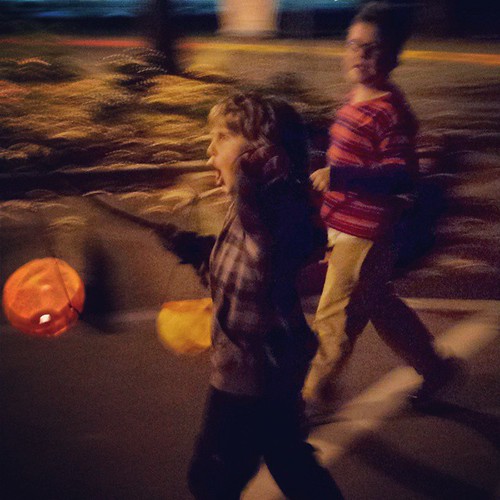
Asher enjoyed it, as did I, but he didn’t want me to take his picture. The second-graders made their lanterns by doing papier mache over a balloon, and then suspending the lantern from a carrying stick. They worked on these over three days at school.
Before we went, I made a really fast Martinmas lantern, in case Lucas wanted to use it. (Neither of my kids wanted to make it with me: Asher because he already made his at school, and Lucas because he’s too old, in his opinion. Saints are sooooo second grade, not seventh.) Oh well. The preschooler I gave it to to carry liked it just fine!
Materials
- clean gallon milk jug
- sharp knife
- glue gun and glue sticks
- autumn leaves
- white tissue paper
- mod podge and paint brush
- tea light candle
Tutorial
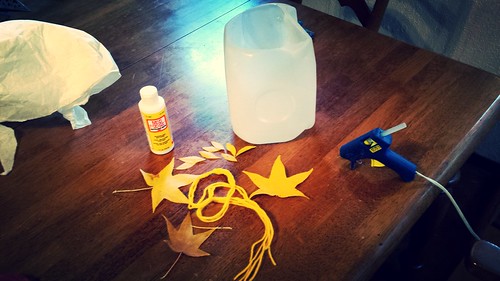
It couldn’t be simpler, really. Cut the top off the milk jug, leaving the handle in place, using a sharp knife like a steak knife.
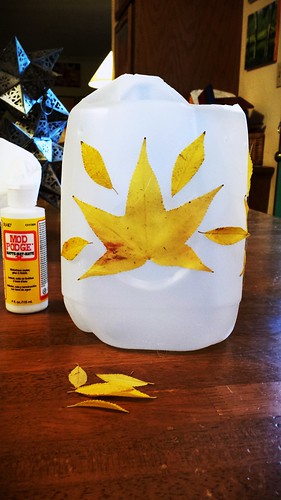
With a glue gun, glue on pretty autumn leaves in a pleasing pattern. Decorate all sides of the jug. A lighted tea light inside will make your lantern glow nicely.
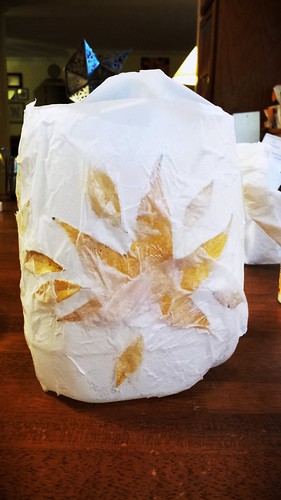
With torn pieces of white tissue paper, decoupage over the leaves and body of the lantern. You can use colored paper if you like. I wanted my leaves to really show through, so I used white paper. You don’t really have to do this step, but if you’d like your lantern to look less like a milk container, do this part. It will dry fairly quickly.
You can use the milk jug’s handle to carry your lantern, or you can add a yarn handle. Poke three small holes in the top of the lantern with your knife. Be careful not to put them too close to the very top edge.
Fingerknit three strands of yarn, about three feet long, to make a hand-width handle. The ends off either side of the finger-knitted section should be long. Thread the ends into the holes you pierced into the handle. Then tie them off, making sure the lantern hangs level from the yarn.
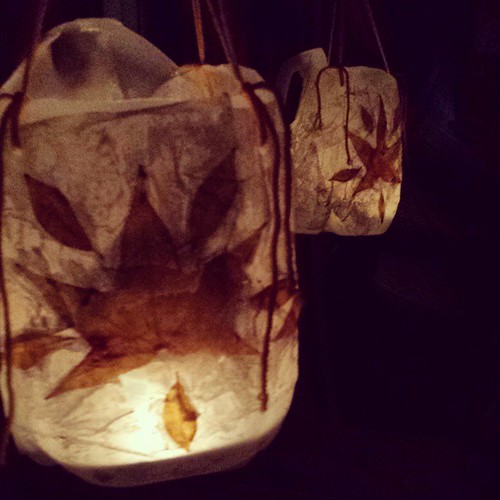
Finally, put a bit of hot glue on the bottom of a tea light candle and glue it down to the bottom of your lantern. This makes it safer. You don’t want your candle bouncing around inside the lantern.
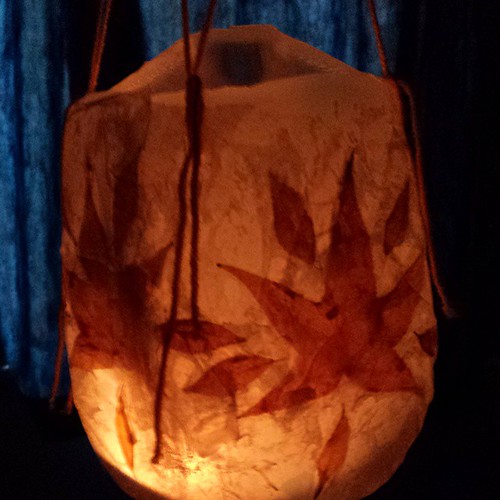
So, how do you celebrate this darkening time of year? Do you do something special for Martinmas on one day, or do you make a week or so of it? Will you enjoy your lantern on many evening walks this fall? Remember it can be used more than just one night.
(More lantern-making crafts can be found in our Martinmas & Thanksgiving Festival E-Book.)
